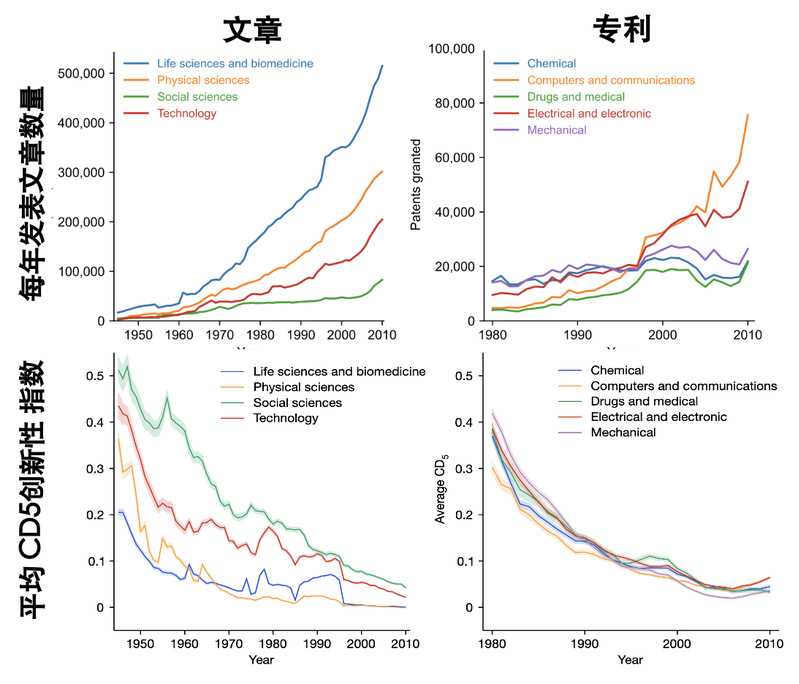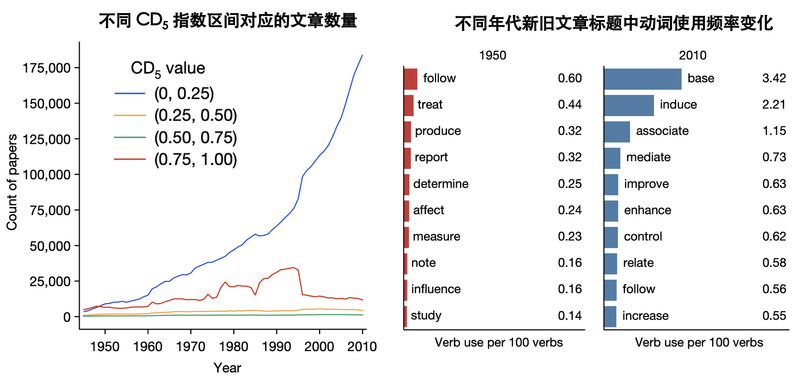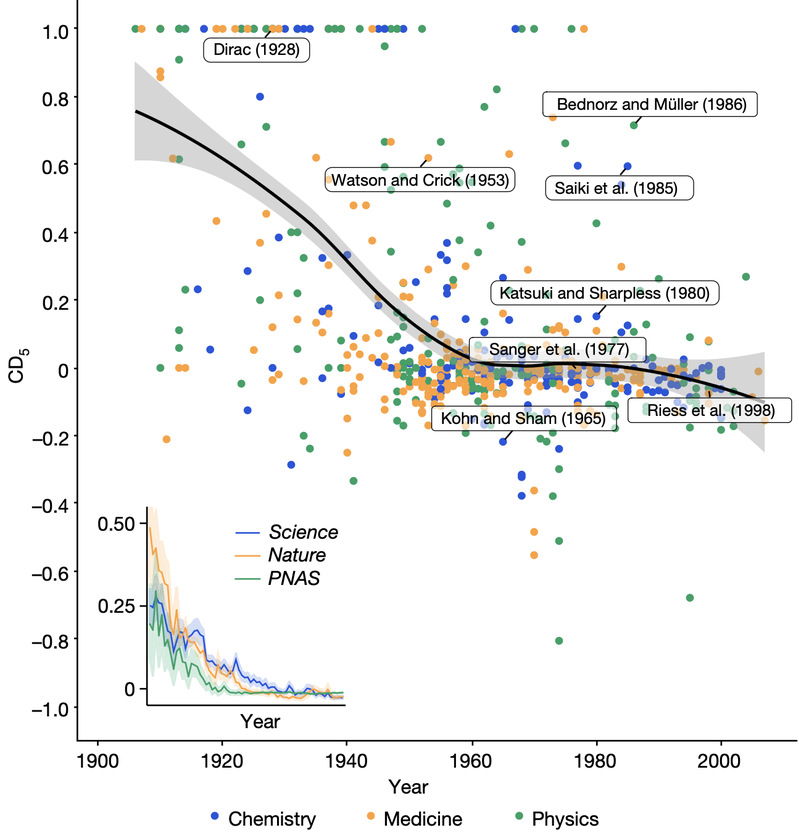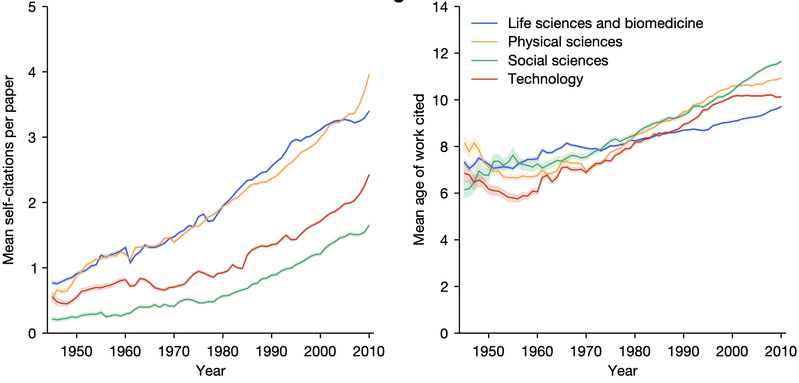https://doi.org/10.1038/s41586-022-05543-x
分析方法:利用 CD index (比如 CD5 )表征文章(发表后5 年后)的创新性或突破性指数,该指数从-1 到 1,越大表示创新性或突破性越高:-1 没有任何创新性基本上是重复或验证前人研究;1 表示全新突破性研究。
分析对象:1976 -2010 年发表的4500 万文章及 390 万专利(按研究方向分类)
分析结果:
1)文章数量越来越多,CD5 创新性或突破性指数越来越低

2)高质量、突破性文章数量基本恒定,增加的主要是 CD5 指数小于 0.25 的文章,且新增文章标题中偏向于使用关联、改善等动词

3)国际一流杂志(比如science nature PNAS)所发表的文章同样符合该趋势

4)自引率增加,且他引用文章时效性降低,多为9-10 年前发表的文章

Overall, our results deepen understanding of the evolution of knowledge and may guide career planning and science policy. To promote disruptive science and technology, scholars may be encouraged to read widely and given time to keep up with the rapidly expanding knowledge frontier (研究人员应注重学科交叉及最新前沿文章的重要性). Universities may forgo the focus on quantity, and more strongly reward research quality (大学应强调文章的质量而非数量), and perhaps more fully subsidize year-long sabbaticals. Federal agencies may invest in the riskier and longer-term individual awards that support careers and not simply specific projects (政府应加大长期人才项目而非具体课题的资助), giving scholars the gift of time needed to step outside the fray, inoculate themselves from the publish or perish culture, and produce truly consequential work. Understanding the decline in disruptive science and technology more fully permits a much-needed rethinking of strategies for organizing the production of science and technology in the future.
